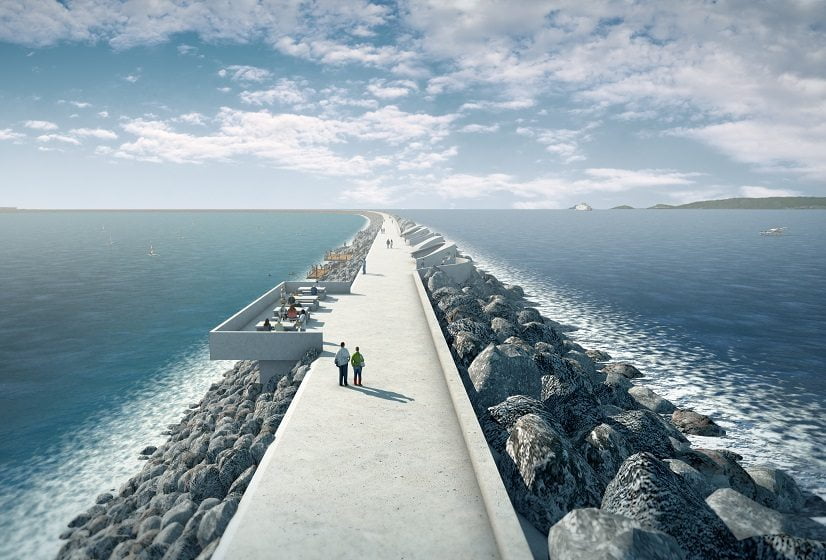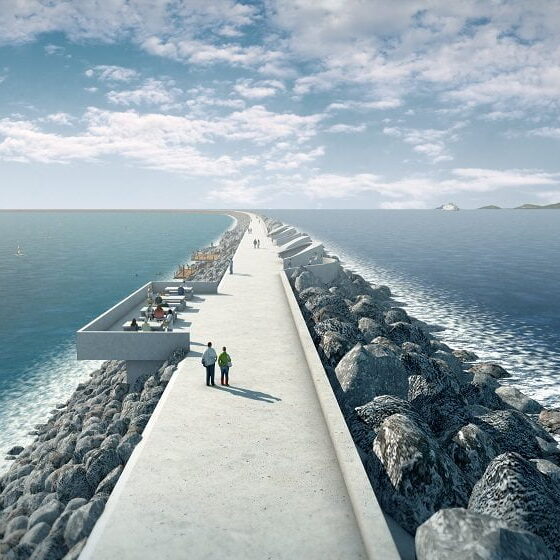

Energy
Tidal lagoons could provide cheaper electricity than offshore wind
Tidal lagoon power plants placed off Britain’s shores could provide renewable energy significantly cheaper than energy sourced from offshore wind farms, according to a new study.
The report, published by Pӧyry Management Consulting, was commissioned by Tidal Lagoon Power, the company behind the bid to construct the world’s first tidal lagoon in Swansea Bay.
Economists from Pӧyry calculated the potential cost profile of power generated by three tidal lagoons – including the Swansea Bay project and two unnamed projects that Tidal Lagoon Power hopes to deliver in 2020 and 2021.
They identified a volume-weighted levelised cost of energy – defined as a ratio of the total costs of a plant to the total amount of electricity it will generate in its lifetime – for the three lagoons as being around £100 per megawatt hour (MWh) of electricity generated.
This compares to the government’s estimation of the cost of energy from one of the next round of planned wind farms of £131 per MWh by 2021.
The report adds that the cheapest of the lagoons assessed, the provisionally titled ‘Lagoon 3’, has a levelised cost of around £90 MWh.
This is broadly similar to onshore wind, large-scale solar PV, nuclear and gas-fired generation, the study says.
All forms of low-carbon energy generation also require government support through a pre-defined strike price.
The report says that the required strike price for the three lagoons would be £111 per MWh, compared to the £155 per MWh currently offered to offshore wind projects. The larger planned tidal lagoons – with Lagoon 3 being the largest – also require a lower strike price.
“This study clearly demonstrates that tidal lagoons can rapidly become one of the cheapest sources of electricity in the UK,” said Mark Shorrock, CEO of Tidal Lagoon Power.
“The more water we impound, the more power we produce, the less support we require. It really is that simple.
“And with an operating life of over one hundred and twenty years, tidal lagoons offer future generations even lower cost electricity following their thirty-five year period of strike price support.”
The report also notes that the very long predicted lifespan of a tidal lagoon makes it equivalent to five generations of offshore wind investment and two generations of investment in nuclear power.
Tidal lagoons work by cutting off an area of water from the rest of the sea. When the tide drops, creating a difference in water level inside and outside of the lagoon, the water is released to passes through turbines.
When the tide returns, water flowing back in generates more power.
The £756m Swansea Bay project would construct a six-mile long U-shaped wall in the Port of Swansea to enclose over seven sq miles of tidal area. Submerged hydro turbines would be used to create clean electricity for over 120 years.
When completed, the plant would have an annual output of 495 megawatts (MW) – enough to power about 155,000 homes with clean power.
The plans were accepted for consideration by the Planning Inspectorate earlier this month. The developers hope that construction will begin in spring 2015, with the first power being generated in 2018.
On top of the three used in Pӧyry’s analysis, Tidal Lagoon Power has two more full-scale projects in the pipeline.
Further reading:
Swansea Bay Tidal Lagoon plans accepted for consideration
Application submitted for ‘game-changing’ Swansea Bay tidal lagoon
Swansea Bay Tidal Lagoon could inject £300m into Welsh economy
Offshore wind subsides will allow industry to compete, says Dong Energy
Renewables could be ‘cheaper than gas’ by 2025, says US study


 Environment10 months ago
Environment10 months agoAre Polymer Banknotes: an Eco-Friendly Trend or a Groundswell?

 Environment11 months ago
Environment11 months agoEco-Friendly Home Improvements: Top 7 Upgrades for 2025

 Features9 months ago
Features9 months agoEco-Friendly Cryptocurrencies: Sustainable Investment Choices

 Features10 months ago
Features10 months agoEco-Friendly Crypto Traders Must Find the Right Exchange




























